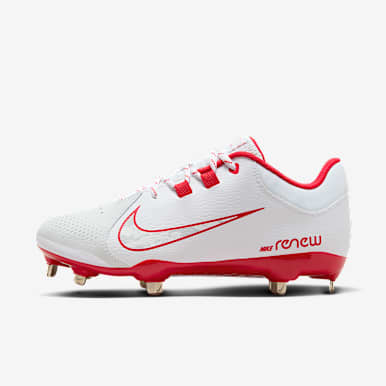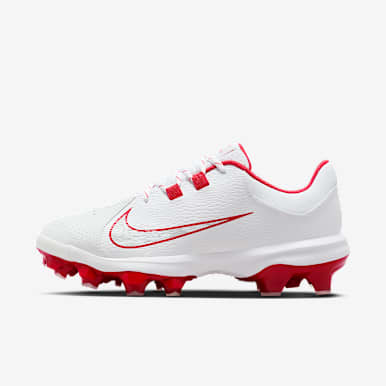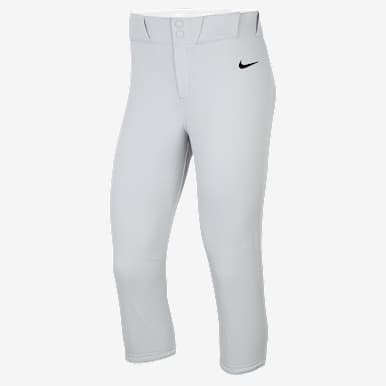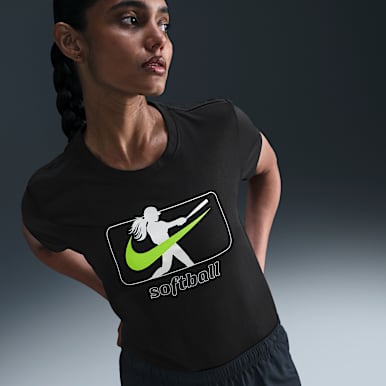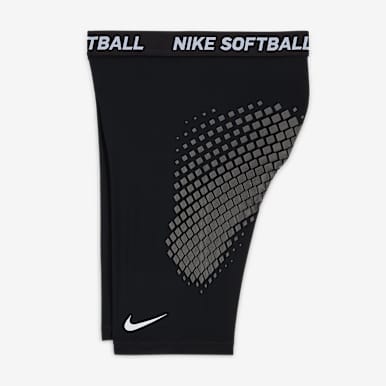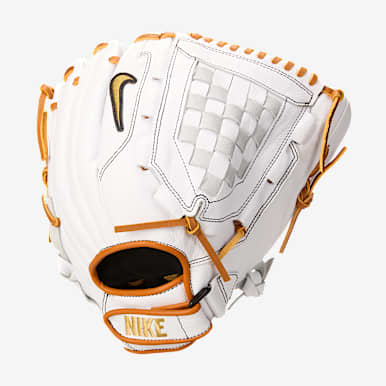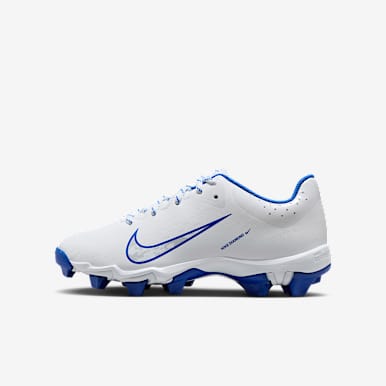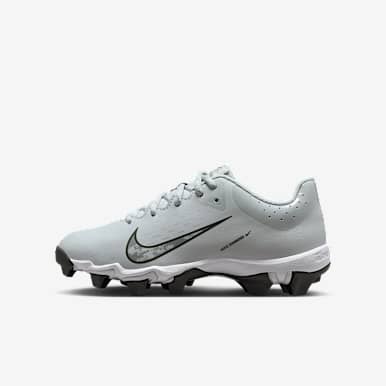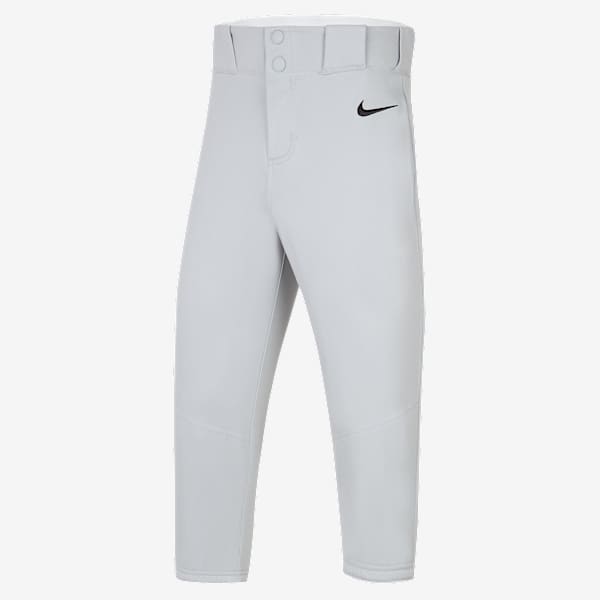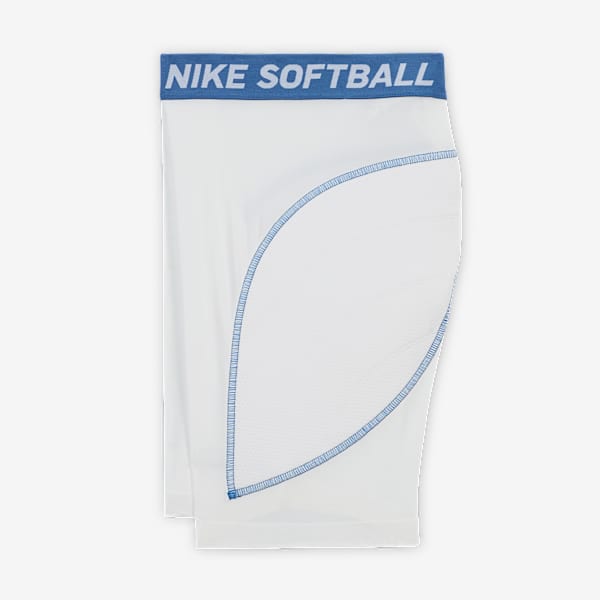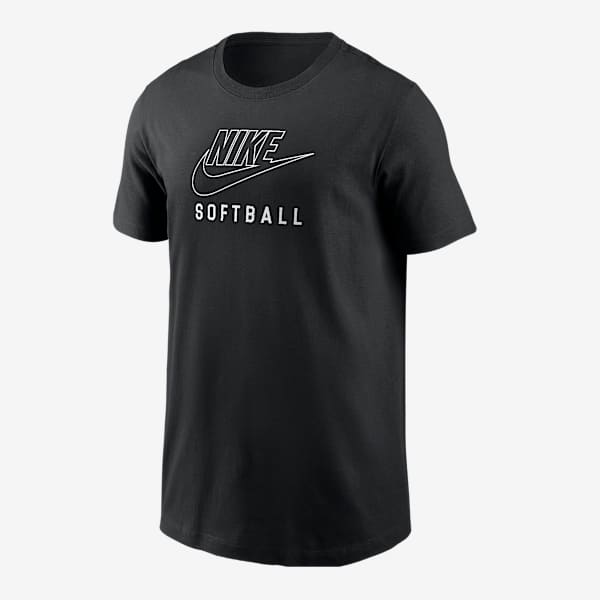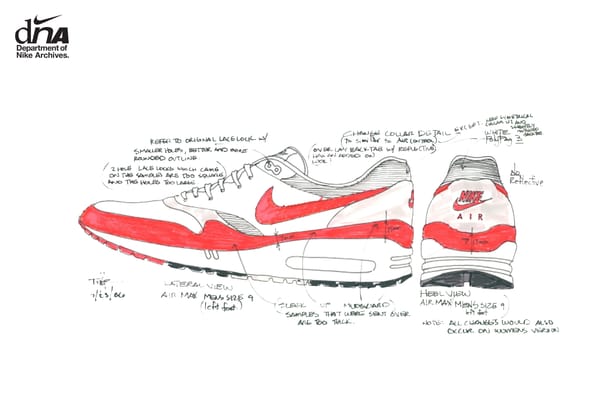All the Positions in Softball, Explained
Sports & Activity
Coaches explain the nine positions in softball and the skills needed to excel in each of them.
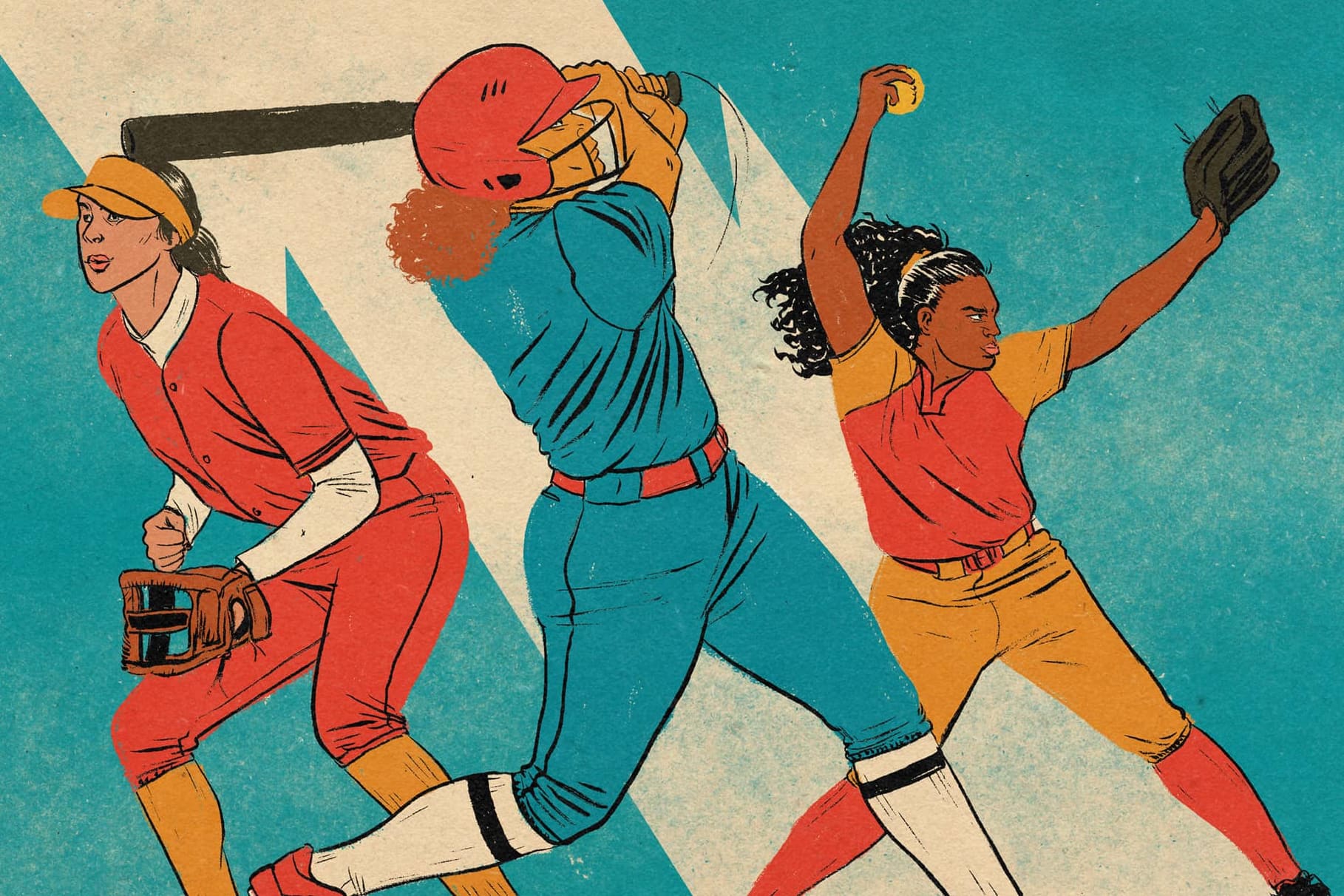
Simply put, a softball game involves two teams taking turns at bat, hoping to score the most runs for their team. A game is divided into seven innings. In the first half of an inning, called the “top of the inning,” the visiting team bats while the home team plays defense. In the second half — or “bottom” — of the inning, the home team bats while the visitors take the field on defense, trying to stop the batting team from scoring.
The nine defenders have distinct positions and responsibilities — each require unique skills to succeed. Below, three softball coaches from the National Collegiate Athletics Association (NCAA) break down the responsibilities and skill sets for each of the nine positions in softball.
(Related: All the Positions in Baseball, Explained)

Softball Fielding Positions
1.Pitcher
Every play in softball starts with the pitcher. This player stands in the center of the infield, holding the ball on the pitcher’s plate (or rubber), a rectangular slab on the ground that measures 24 inches by 6 inches. The rubber is 43 feet from the back point of home plate, where the batter and the catcher are positioned (more on these players ahead). Play starts when the pitcher throws the ball toward home plate.
In fast-pitch softball, pitchers create high velocity for their pitches with a wind-up motion called the windmill. In this motion, the throwing arm makes a big circle as the pitcher takes a step forward with the leg of their non-throwing side. As the pitcher’s foot reaches the ground, they release the ball underhand, sending it toward the catcher at home plate.
There are several types of pitches softball pitchers throw:
- Fastballs, the most basic pitch, are thrown straight and fast.
- Rise balls look like they are being thrown straight, but they move upward vertically as they travel toward home plate, ending up above the strike zone.
- Drop balls do the opposite: They start out looking like a fast ball, but because they’re spun in a specific way, they fall downward just before reaching the catcher’s glove.
- Curveballs and screwballs twist as they travel toward the plate, causing the softball to move side to side as it approaches the batter.
- Changeups look like fastballs but come in more slowly than fastballs do.
Joanna Hardin, head softball coach at the University of Virginia, said the best pitchers throw pitches at multiple speeds with accurate aim. If a pitcher throws all of their pitches at the same speed, she said, hitters can time the pitch — no matter how fast it is — and start hitting the ball hard.
“The more that you can change speeds, the more you can keep hitters off balance,” she said. When a pitcher can throw multiple speeds to both sides of the plate, batters have to wait longer to react to each pitch. That split second of hesitation can keep the batter from getting the barrel of the bat on the ball, she said.
But the pitcher’s job isn’t done once they throw the ball. They must also field ground balls and pop ups in the infield — some that are hit directly to them but also short ground balls along the first and third base lines.
When pitchers hone their agility and can quickly sprint to short ground balls and field them, it makes the infielders’ jobs easier, said Bridget Orchard, head softball coach at Villanova University.
“If your pitcher can’t field well off the mound, the third baseman has a lot more work to do — they know they have to get everything,” from short bunts to hard ground balls that are hit past third base, she said.
But when the pitcher is able to quickly get to those balls, the third baseman — or the first baseman, for balls hit up the first base line — can focus on fielding balls that are hit harder or farther down the base lines.
At the beginning of the game, the pitcher who takes the field is called the “starting pitcher.” At any point in the game, the team’s coach can remove the starter and bring in a “relief pitcher,” who takes over the position.
(Related: Check Out the Best Softball Cleats by Nike)
2.Catcher
Catchers crouch behind home plate to do their main job: catching pitches thrown by the pitcher. But they have many other duties, some of which aren’t so obvious, Hardin said.
In addition to catching pitches, catchers also signal to the pitcher what kind of pitch to throw and where to aim the pitch. When a batter hits the ball into the outfield, catchers work with the middle infielders — the shortstop and second baseman — to call out where players should line up to throw the ball back. The catcher must also cover home plate and throw the ball to second and third base to try to nab runners attempting to steal bases.
(Related: How to Clean Baseball Pants)
Even with all of that action, one of the catcher’s most important jobs involves stopping the game’s action at the right time by calling a timeout, Hardin said.
“The most effective catchers know the right time to call timeout,” she said. “They can see the pace of the pitcher. They can see if the pitcher’s routines are rushed or if the pitcher’s heart rate is up, so they know when to call timeout and then what to say.”
During a timeout, the catcher may visit the pitcher at the rubber. Here, Hardin said, the catcher can help a struggling or rushing pitcher reset and regroup, regain their poise and refocus.
Great catchers can also make pitches look better than they are based on how they catch the ball, she said. By moving their glove slightly as they catch a ball, catchers may make a ball that’s outside or inside appear to have been a strike. This is called “pitch framing.”
“Catchers can steal a lot of strikes by how they receive pitches,” she said. “They know how to make every pitch look good, so the umpire gives you the benefit of the doubt [on close pitches].”
3.First Base
This infielder stands near first base. When the ball is hit toward them on the ground, the first baseman must field the ball and touch first base before the runner reaches the bag, or the runner will be safe.
They must also catch throws from the other infielders: When there are no runners from the opposing team on base and a ground ball is hit to the second baseman, third baseman, shortstop or pitcher, those infielders will throw the ball to the first baseman, who must catch it with at least one foot touching first base. If they can do so before the batter reaches first base, the batter is out.
Due to this responsibility, players at first base are often skilled at catching balls, and they typically wear a slightly larger glove — called a first baseman’s mitt — to help them snag balls that are thrown high or wide or ones that bounce in front of their glove.
4.Second Base
The second baseman’s standard position is to the right of the first baseman, between first and second base. These players need to be very versatile, said Orchard. They need to be fast and agile, able to cover both first and second base when needed, and they need to both receive throws from the outfield and field ground balls and fly balls.
“They have a good overhand throw — just not as good as the shortstop,” she said.
That’s because the shortstop (explained in more detail below) will have to make longer throws from the opposite side of second base over to first base.
Second basemen also convert double plays: When there’s a runner on first, teams will try to get both the runner and the batter out on the same play when a ground ball is hit. And second basemen are often key in “turning two.”
For example, if the ball is hit to the pitcher, shortstop or third baseman, those infielders will field the ground ball and throw it to second. Either the second baseman or the shortstop will be standing near the bag, waiting to catch that throw, touch the base and then quickly throw the ball to first, hoping to beat the runner who hit the ground ball.
If the ball is hit to the second baseman in the same situation, they’ll either flip the ball to the shortstop to “turn two,” or tag the bag themselves before throwing to first.
Second basemen also work in tandem with shortstops in a leadership role, said Amanda Chidester, assistant softball coach at the University of Michigan. When a ball is hit to the outfield, these middle infielders must communicate where players should line up so the defense can throw the ball back into the infield to keep runners from advancing.
5.Shortstop
The shortstop’s typical position is between second and third base. They need to field a huge variety of plays over a large area, Orchard explained. If a ground ball is softly hit just to the pitcher’s right, the shortstop will need to charge forward, field the ball and quickly throw it to first base to get the runner out.
The shortstop must also field ground balls that are sharply hit just to the left of the third baseman’s glove, in an area called the “5-6 hole,” named after the common scorecard verbiage: The player at third base is designated by a “5,” and the shortstop is “6.”
When the ball is hit here, the shortstop must field it while running to their right — often with their glove across their body, backhanding the ball and then throwing it back in the other direction to try to beat the runner to first and get them out.
It’s important that shortstops not only field these balls but do so smoothly and cleanly, Orchard said, because of how close the bases are to each other.
“A lot of people are more familiar with baseball, where the bases are a little farther away — 90 feet apart,” she said. In this case, the shortstop may have time to misplay a ground ball, reset and throw the runner out. “But in softball, if you bobble the ball, they’re likely going to be safe because first base is only 60 feet away.”
In addition to the physical skills shortstops need — quick feet to get to ground balls and fast hands to quickly throw the ball — effective shortstops also need communication skills, said Hardin.
“The shortstop needs to run the infield when a play is happening. When a ball is hit into the outfield, they’re kind of the commander, telling the other players where to line up and where to go,” so the ball can be thrown back into the infield to keep runners from advancing too far, she said.
“They’re working with the catcher on where we’re lining up and where the throw should go. They’re reminding the second baseman, ‘Hey, you need to be here.’ They’re talking to the pitcher about what kind of bunt coverage the team will be in.”
Shortstops, like second basemen, also turn double plays. Just like their middle infield counterpart, shortstops will receive throws at second from pitchers, third basemen and second basemen on ground balls when a runner is on first. They have to quickly catch the ball, tag second base and fire it over to first base.
6.Third Base
This player stands near third base. When a right-handed hitter takes a powerful swing and is slightly ahead of the pitch, they’ll often “pull” the ball, hitting it down the third base or left field line.
Balls like this can be hit especially hard because of the angle and power of the hit, so they go from the bat to the third baseman at remarkable speed — it’s why this position is nicknamed “the hot corner.”
“They call it that for a reason. Everything happens so fast, and you have to be ready,” said Orchard. “You have to be really quick and have great reflexes.”
Once they’ve fielded one of these fiery grounders, third basemen need to throw the ball across the field to first base — one of the longest throws in the game.
But third basemen can’t just play deep (or far from home plate) to acquire more time to field these ground balls. They also need to be ready to field balls that are lightly hit toward third base or that are bunted, a technique where instead of swinging, a batter hits the ball while holding the bat out over the plate in a stationary position.
Drag bunts, where players try to bunt down a baseline before sprinting to first, are common in softball, Chidester said. Therefore, players at third base need to be quick in order to run up, field the ball and throw to first.
7.Center Field
The center fielder is one of three players in the outfield, the area of grass between the dirt infield and the edge of the field. All outfielders are responsible for catching fly balls, fielding ground balls and throwing balls to infielders. Center fielders cover a large amount of the outfield, so they’re usually the most skilled of the three outfield players, said Chidester.
“They have the best range and the best athleticism in the outfield. They should be able to take great angles, and they need to have speed” to quickly reach fly balls, she said.
Center fielders also act as the outfield’s captain on most teams, Chidester said. They instruct the left and right fielders on where they should play, depending on the game situation and the tendency of the batter at the plate to hit the ball to one area or another.
8.Right Field
The right fielder plays in the outfield on the field’s right side, between second and first base. But like in baseball, softball is seeing more defensive shifts, where players move to spots on the field that are different from their normal positions to exploit a hitter’s tendencies.
For example, Orchard said, if there’s data on an opposing right-handed hitter that shows they almost always hit the ball to the left side of the field, an outfielder — like a right fielder — might be asked to play a deep infield position while that batter’s up, standing behind the shortstop and third baseman.
In these cases, she said, it’s becoming more important for outfielders not just to be great at catching fly balls but also at fielding ground balls and throwing them to first base.
9.Left Field
The left fielder plays in the area of the outfield from second base to the left field foul line. This player needs to have strength and power to throw the ball far, said Chidester.
“There’s a lot of times where right-handed hitters pull the ball, and the left fielder needs to be able to throw the ball to home,” she said. More plays with these long throws happen in left than right field, she said, so a strong arm for a left fielder is key.
The left fielder also must contend with the tricky way balls fly into their part of the outfield, she said. When a right-handed hitter pulls the ball to left field, the ball spins in such a way that it hooks toward the left-field line. The same is true of a left-handed hitter who goes the opposite way, hitting an outside pitch to left field.
But the curve of the ball off of each type of hitter’s bat is different — a ball sliced off of a left-handed hitter’s bat curves more sharply than a hooking pull hit by a righty. The left fielder needs to be ready and skilled enough to catch both balls, Chidester said.
Designated Player/Flex
On offense, the designated player, or DP, is similar to a designated hitter (DH) in baseball, but with some slight differences. The DP, like baseball’s DH, can bat in place of any of the other nine positions on the field.
For example, if the DP is assigned to the catcher’s spot in the batting order, the DP will bat instead of the catcher when it’s the catcher’s turn to bat. The player that the DP is hitting for — in this case, the catcher — is called the team’s “flex” player.
Unlike the DH in baseball, softball’s DP can also play defense. The DP can enter the game on defense in place of another player for an inning, while the other player moves to the bench. Later, the starting fielder can re-enter the game, with the DP returning to the bench.
The player listed as the flex does not bat unless they replace the DP in the lineup. In this case, the catcher would hit for themselves. When this happens, the DP has been permanently removed from the game.
Words by Greg Presto
